Realf Heygate
Interview by Oliver Durcan
-
Published May 2019
-
In a talk you did recently, I saw you present your paintings as simulated 3D renders. Some were animated smooth and slow like iPhone adverts, others moved and transformed more quickly and more functionally for the purpose of your talk. They all had gesture; digital gesture. Could you talk about how gesture is or isn’t part of your practice?
There is a yearning for gesture in my work. I think my recent paintings of Picasso reproductions demonstrate this. They depict sheet-iron sculptures with painted improvisatory marks. These marks were made in an instant, with little conscious reasoning. Reproduced through photorealist painting, they are deliberated over painstakingly. A deceleration occurs. The once heroic sense of spontaneous gesture becomes bracketed and contrived. This attempt to reproduce the glorified improvisatory marks of a genius inevitably falls short. There’s a futility there that I enjoy.
Gestures are constantly implied in the language of digital interface. We navigate our screens with pokes, scrolls and swipes. ‘Digital’ has Latin origins in ‘digitus’, meaning ‘finger’. This is an extension of our body most commonly used for expressive gesture. In 3D scanning my paintings, they can be interacted with digitally. Paradoxically this maybe proposes the screen as a site of return for the artists’ hand.
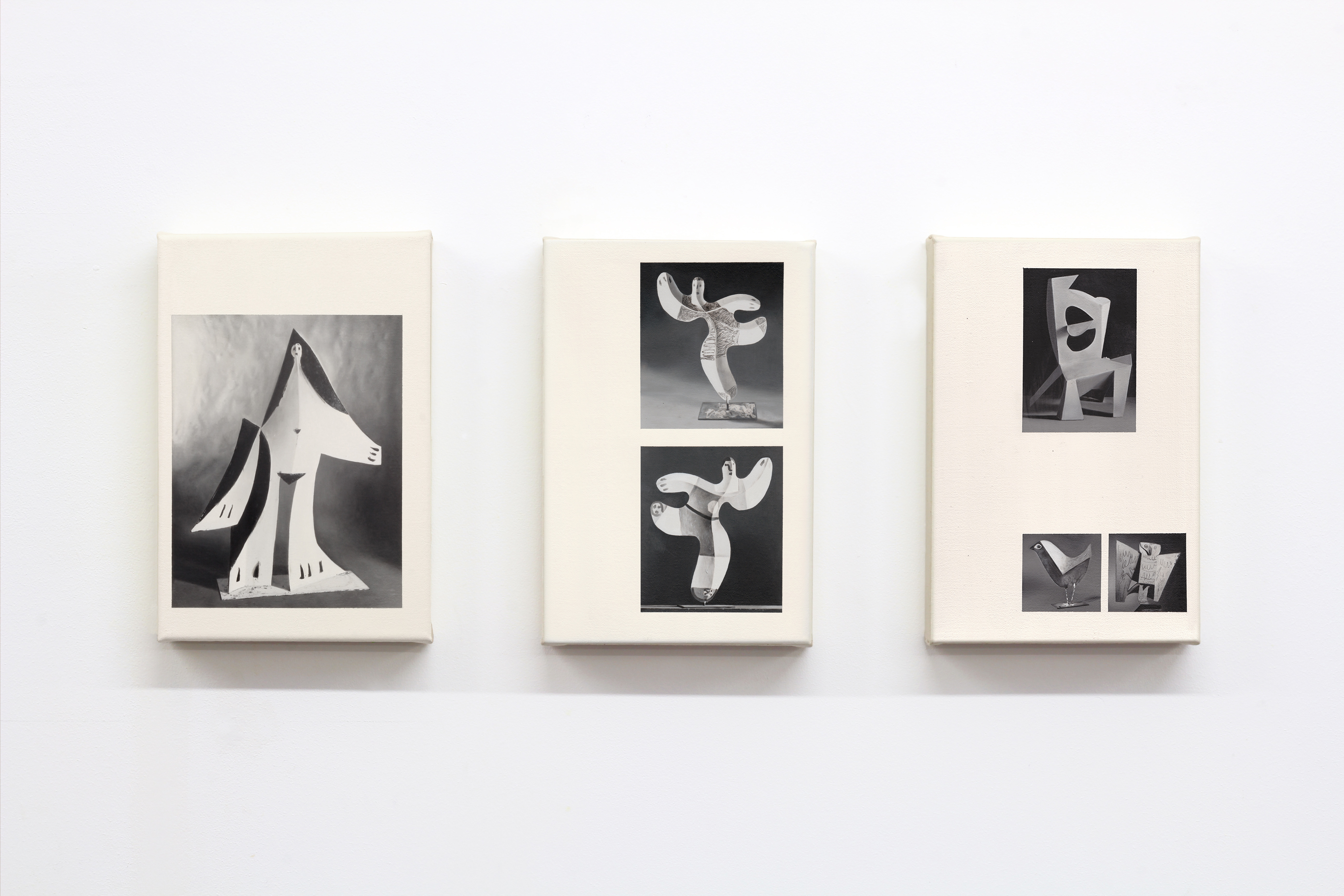
Sheet Iron, oil on canvas, 30 x 20 cm (x3), 2018
Navigating, scanning and painting are all ingredients in the different stages of your practice that often lead to a final image. They feel like key items to know and understand when looking at your work as they give the context to the images you create/present. Would you agree with this and could you explain the decisions you make to orchestrate this balance between the presentation of image and production?
There’s an imbalance between the presentation of image and production. The process of production (painting) is slow, laborious and convoluted. In most of the paintings the trace of my hand is very minimal. What manifests is an image that looks as if produced mechanically, in an instant. The process of production by hand is largely concealed. This feels appropriate. Arguably I’m not really creating an image. The image is determined long before the painting is completed. Perhaps what’s being created is an object that employs a selected image as a facade. Yet I feel it’s important that the object is a painting, as it allows me a much slower reading of the image. The 3D scans further this imbalance. As digital objects, these very slow paintings have the potential to move at high speed.
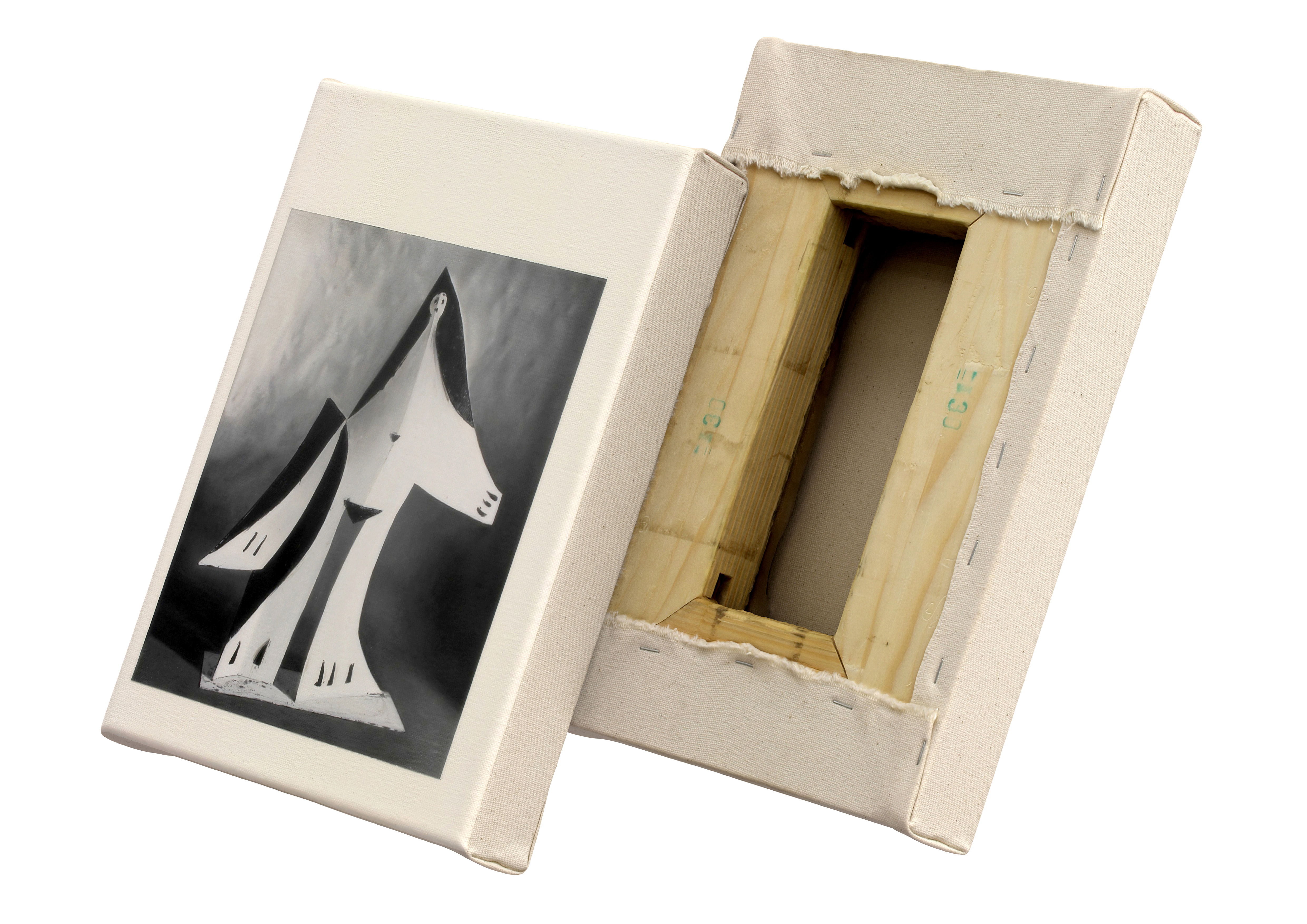
Still from Sheet Iron, digital render, 2018
Do you think alot about speed in culture? And do you think your work has a function in this?
I definitely think about the paintings in relation to speed. They’re an exercise in slowness. The process is unavoidably slow. This also allows for a slowed down reading of an image and, in turn, the painting. I find the demand for patience the most challenging part of my painting method. Our attention spans are so rubbish. I’m constantly fighting the urge to take shortcuts. Spontaneity can undoubtedly produce great artworks, but in my paintings rash decisions always haunt me further down the line. Although maybe this reflects a fear of relinquishing control over the process.
My paintings force me to spend time with the images I select. They act as an anchor point in the image’s trajectory. We’re embedded in a constant flow of images, but we rarely look at them properly. My recent Karl Blossfeldt paintings are a good example of this. I remember breezing past his photographs at Whitechapel Gallery a few years ago. I completely overlooked them. Through painting, I’ve developed an appreciation for them. The paintings completely decelerated and transformed my reading of something that seemed familiar or banal.
As I’ve touched on, the 3D scans of the paintings have the potential to be distributed at high speed. However, an integral component of their being is render times. There’s this perverted desire to have the latest hardware to decrease render time. But, if you’re not working to a specific deadline, render times are invaluable. They allow for time and space between works, and for decisions to be really considered. Anyway, my amateur theory is that the better rendering hardware you have, the more elaborate and demanding scenes you tend to construct. So your render time will often remain at a constant!
Obsolescence has close links with speed, which I find interesting in relation to my work. The ever increasing rate of technological improvement brings about the constant reinscription of obsolescence. My current method and results for 3D scanning will likely seem archaic, even laughable, in ten years time. But I don’t think the paintings will be subject to this in the same way. Specific modes of painting might become outdated, but they’re never obsolete.
 Path Through The Meadow, oil on canvas, 180 x 130 cm, 2019
Path Through The Meadow, oil on canvas, 180 x 130 cm, 2019I saw your digital work shown separate from your paintings at the Griffin Art Prize 2019 (the paintings were exhibited in a different part of the exhibition). How did you feel about this and do you see yourself separating the two in exhibition contexts?
Placing the digital work directly alongside the paintings seems overly didactic, or even diagrammatic. I’ve found it's valuable to have space between them. The partitioned layout of the new space at Elephant West allowed the digital work to be in plain sight, whereas the paintings were more hidden. This meant it was impossible to view both components simultaneously. Crucially, the screen was encountered before the paintings. This reverses the timeline in which the two components were made, and allows the mind’s eye to revert back to the digitals when viewing the paintings. The digital work was essentially an immaterial display system to underline the material condition of the paintings. I feel this wouldn’t have worked if the physical paintings were viewed before their scans.
I’m approaching a point where I’d be confident in showing just the digital paintings. In this case, the physical paintings would remain unseen. This would nod towards a form of cult value, where the material artefact remains hidden from and irretrievable to the viewer, but a knowledge of its existence develops a sort of mythic authority. Its existence is based largely on faith.
You say you’re approaching the confidence to show just the digital work. Do you feel any angst in letting go of presenting painting? What is it that holds you back on making this decision?
Despite the didacticism that might exist when they share the same space, there’s definitely a dialogue between the screen and the paintings that I enjoy. They can bring out qualities in one another that would not be apparent otherwise. Also, I guess in the past I’ve felt simply that when so much time is invested in a painting, the urge is naturally to want it exhibited. I’m finding it easier to let go of this urge nowadays.
I’ve previously not quite felt confident in my execution of the renders. Each time I go into the software I figure something new out which immediately out-dates what I’d made before, in that it achieves my initial goal much better. This problem is partly down to my own learning of the software being purely from half-watching Youtube tutorials. I know how to achieve certain things in pressing a certain sequence of buttons, but I don’t actually have an understanding of the mechanics as to why pressing those buttons achieves that. Although, that gives the process this mysterious quality, a sort of magic perhaps, which makes it exciting. There’s an element of hit and miss which isn’t so frequent in the paintings, and this constant renewal of obsolescence is maybe something to actually be embraced.
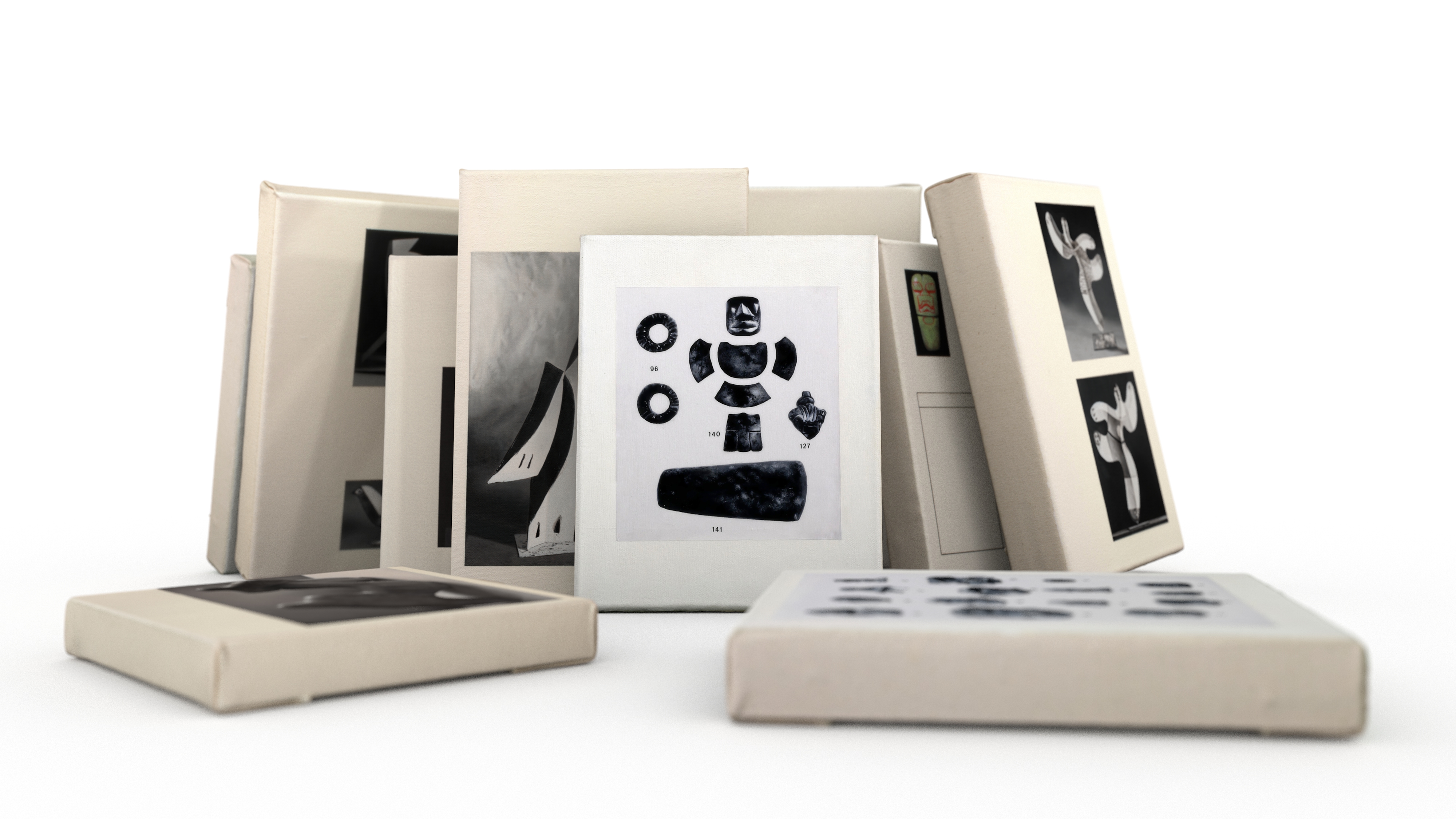 3D scans, 2019
3D scans, 2019We’ve just produced an exhibition together with Daryl Brown (‘No Motion Occurring’) through my new moving gallery, ‘Shipment’. We’ve all discussed how this has been one of the most collaborative experiences of producing an exhibition with sound, architecture and painting all informing each other via the exhibition subjects of speed, attention and construction. Could you talk a bit about collaboration in your practice and any takeaways from this experience?
Other than being involved in shows with friends, there’s been little collaboration involved in my practice since graduating. I admittedly can be quite introspective in my making, so ‘No Motion Occurring’ was a good opportunity for a more collaborative approach.
Whilst each of our works were physically made separately, the conversations we had around them were are as much a formative component as the actual labour. Conversations of a show began between you and I over a year ago now, and it’s really interesting to see how those ideas have morphed over that period of time. Tracing back over our gradual development of ideas is intriguing. What we’ve ended up with bares little resemblance to where we began. I think there was an openness in our approach that stopped us from getting too hooked on one specific idea, and instead allow ideas to reveal themselves more naturally over time.
There seemed to be a lot of mutual trust between us that really helped. Each of our pieces involved a huge amount of labour that pushed right against the deadline. There wasn’t much way of knowing whether the components would actually work together until they were installed in the space. For example, Daryl’s structure is so intricately crafted that the paintings could’ve been excessive. Similarly, we weren’t sure whether decent subwoofers for your audio would induce a more engaged, bodily experience, or instead distract to an unnecessary form of spectacle. Thankfully, the components came together really successfully. I enjoyed this element of not knowing. There are definitely themes to the show established before its opening, but for me it was mostly still to be discovered in the space. The gaps in Darryl’s structure, for instance, allowed the backs of my canvases to be seen. For me this related nicely to my 3D scans. It was something I hadn’t thought of at all until I saw the work installed.
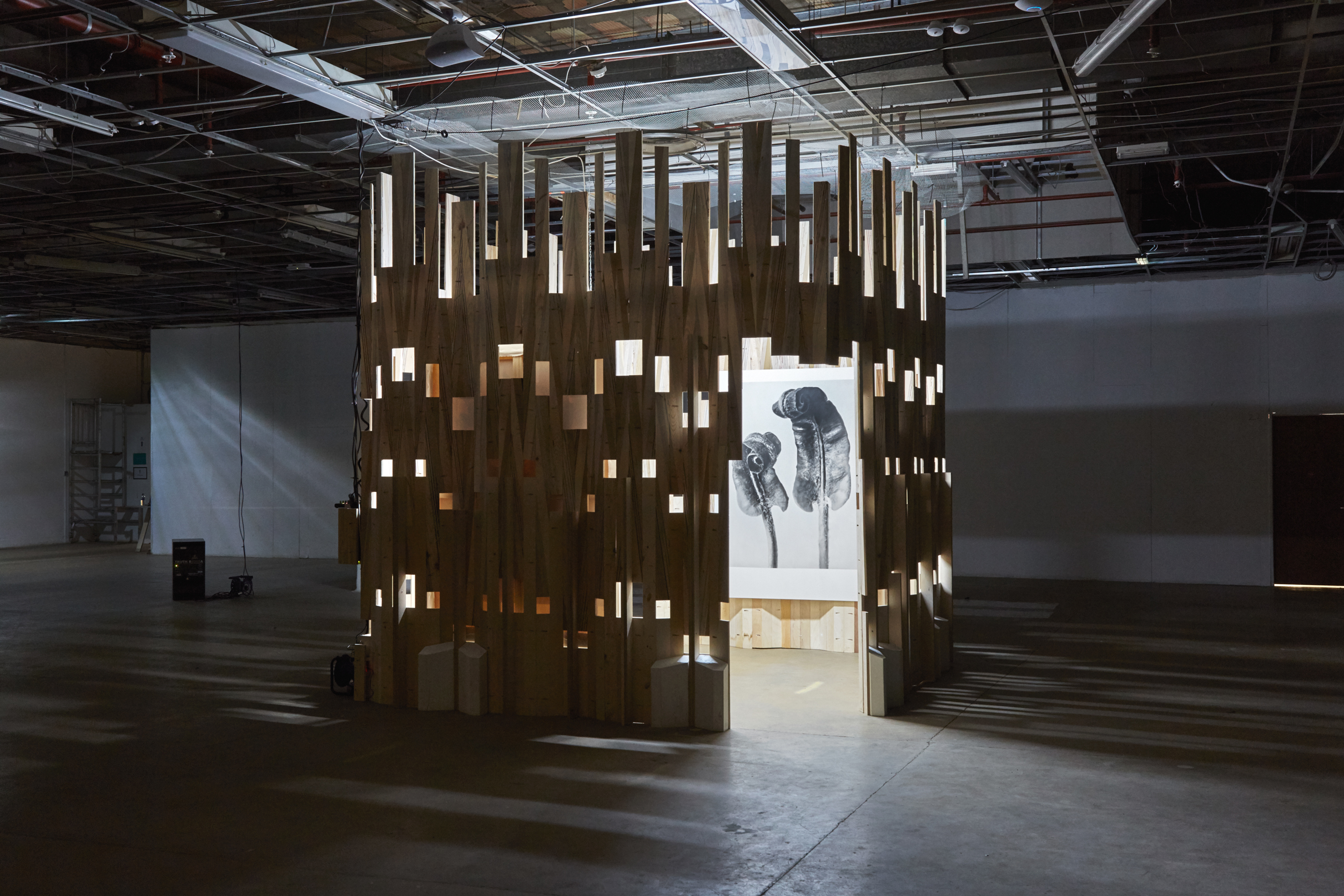 No Motion Occurring, 2019
No Motion Occurring, 2019So that brings us to the present. What’s coming up for you and can you see any new direction for your work?
I've just put together a solo ZIP show hosted by Off Site Project. The show, titled 'Mandylion', exists in a ZIP folder thats free to download from their website (http://offsiteproject.org/ZIP). Files for two 3D scanned canvases are included (one blank, one finished painting). They're free to be used in whatever way the recipient wishes. They can simply be viewed, or alternatively manipulated and re-configured with the right software. I've been holding off making the scanned canvases available online. There’s often a declaration of accessibility when 3D scanned artworks are made available for download online. I don’t think this is necessarily true as they require a certain know-how and specific software to use. So, ‘Mandylion’ acts more as a gesture. The ZIP show format seemed a good platform for it. In contrast to viewing the 3D scans through an online third-party platform, I like that there's something more intimate in the experience of downloading and unzipping the folder.
The title derives from the Mandylion tradition in christianity, where an icon appears miraculously, independent of the human hand. This idea is echoed today as technology further grasps image production and the artist's hand becomes ever more dislocated. It’s an idea I stumbled upon recently and I think there’s some rich material to be explored there, so I'll be digging into this in the coming months. I'm excited to be presenting my first solo show this summer at Peter von Kant in Deptford. I'll be exploring these ideas further in the new work on show.
In terms of a new direction, I'm still really enjoying using the book page reproduction as a format for my paintings. Its something I've been working with for over 3 years now but it continues to intrigue me. So these will continue for now. I was very happy with how the large scale paintings in 'No Motion Occurring' turned out, so I'm hoping to do more paintings at that size.
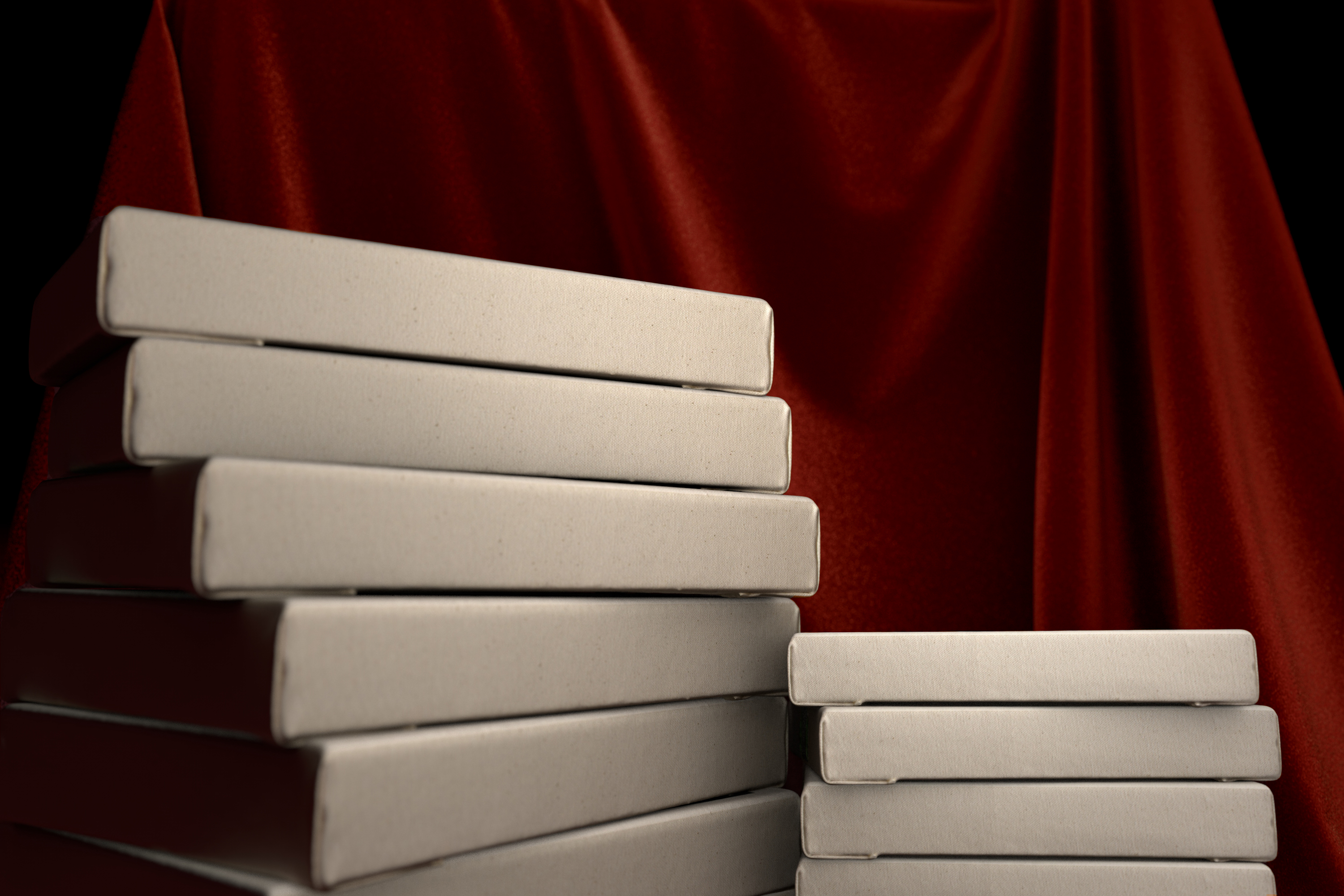
Still from Mandylion, digital render, 2019
-
Realf Heygate (b. 1994) is an artist based in London. Heygate graduated from BA Fine Art Central St Martins (2017). Recent exhibitions include 'No Motion Occuring', Shipment London; 'Elephant x Griffin Art Prize' at Elephant West; 'Form' at Cob Gallery; 'Woon Foundation Prize' at Baltic 39. Upcoming shows include a solo exhibition at Peter von Kant, London. Awards include Central St Martins Associate Studio Programme (2017-19); Elephant x Griffin Art Prize shortlist (2018); Woon Foundation Prize shortlist (2017).
realfheygate.com
Oliver Durcan (b. 1991) is an Artist and Producer based in London. He is the Director of Shipment and was previously the co-director of IKO (It’s Kind of Hard to Explain). Recent curatorial projects include ‘Mum, I Don’t Want to Be an Artist Anymore’ by Karolina Magnusson-Murray, Shipment London; ‘IKO: Dreamworks’, Limbo Margate; ‘IKO: byIKO’, Subsidiary Projects London. Recent exhibitions include ’No Motion Occurring’, Shipment London; ‘Mission to Touch the Sun’ (touring), Paradise Works Manchester + Enclave London; Paper Cuts, Saatchi Gallery; Lounge Arrival, Arebyte London. Upcoming projects include a collaborative exhibition at Coherent Brussels and the L21 x Fundación Camper Curatorial Residency Program, at L21 Palma.
oliverdurcan.com
shipment.org.uk
-
If you like this why not read our interview with Bryony Gillard & Phoebe Cripps
-
© YAC | Young Artists in Conversation ALL RIGHTS RESERVED
